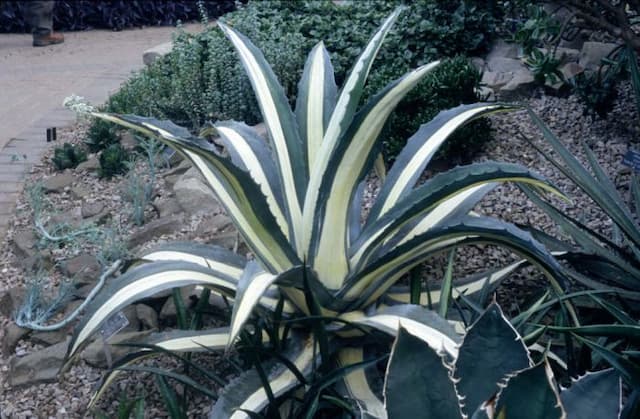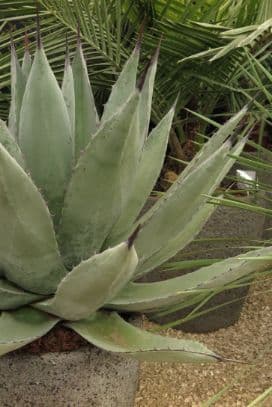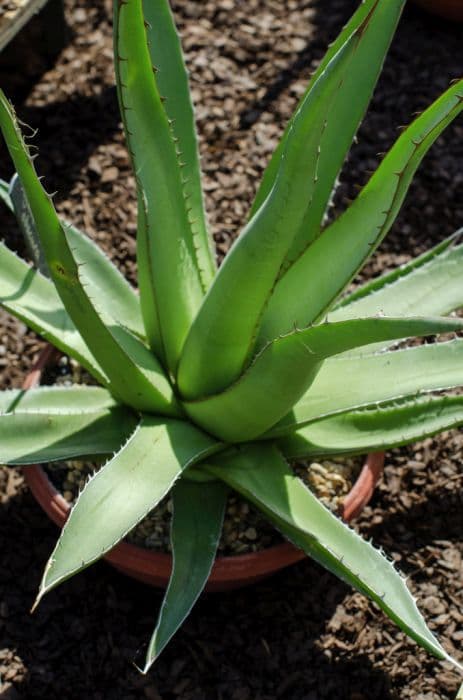Autumn Squill Scilla autumnalis

ABOUT
The autumn squill is a perennial bulbous plant known for its attractive, star-shaped flowers. The slender, upright stems are adorned with narrow, lance-shaped leaves that are typically arranged in a rosette at the base. These leaves are usually a deep green, providing a nice contrast to the delicate blossoms. The charming flowers appear in clusters, each bloom composed of six petals which spread outwards, creating a star-like silhouette. The color of the flowers ranges from a pale to a more vivid blue, with each petal displaying a darker central vein that adds depth and interest to the overall appearance. As the name suggests, the flowering period occurs in the late summer to autumn, offering a splash of color when many other plants are beginning to fade. The autumn squill is admired for its simplicity and natural beauty, which makes it a popular choice for rock gardens, borders, and wildflower collections.
About this plant
 Names
NamesSynonyms
Autumn Squill, Fall Squill, Autumn Bluebell.
Common names
Scilla autumnalis, Prospero autumnale, Oncostema autumnale, Hyacinthus autumnalis, Stellaris autumnale.
 Toxicity
ToxicityTo humans
Autumn squill, the plant in question, contains toxic compounds that can be harmful if ingested. While specific toxicity studies on this plant may not be widely documented, it is generally known that many plants in the genus Scilla contain cardiac glycosides and other compounds that can be toxic. If a person ingests parts of the autumn squill, they may experience symptoms such as nausea, vomiting, diarrhea, and abdominal pain. More severe poisoning could lead to cardiac effects, such as arrhythmias, and potentially life-threatening symptoms. Therefore, caution should be taken to avoid ingestion of any part of the autumn squill.
To pets
Autumn squill is toxic to pets such as dogs and cats. The toxins present in this plant, possibly including cardiac glycosides, can cause various adverse health effects if ingested. Symptoms of autumn squill poisoning in pets may include vomiting, diarrhea, drooling, lethargy, and abdominal pain. More serious cases can lead to heart rhythm disturbances, seizures, and even death. Due to these potential risks, pets should be kept away from the autumn squill to prevent accidental ingestion.
 Characteristics
CharacteristicsLife cycle
Perennials
Foliage type
Deciduous
Color of leaves
Green
Flower color
Blue
Height
6 inches (15 cm)
Spread
6 inches (15 cm)
Plant type
Bulb
Hardiness zones
7
Native area
Mediterranean
Benefits
 General Benefits
General Benefits- Ornamental Value: Scilla autumnalis, commonly known as autumn squill, adds visual interest to gardens and landscapes with its delicate blue-violet flowers and grass-like foliage.
- Ecosystem Support: It provides nectar and pollen for bees and other pollinators during late summer to early autumn, supporting biodiversity.
- Low Maintenance: As a hardy plant, autumn squill generally requires minimal care once established, making it suitable for novice gardeners or those with limited gardening time.
- Drought Tolerance: Once established, Scilla autumnalis is relatively drought-tolerant, reducing the need for frequent watering and conserving water resources.
- Naturalizing Areas: Autumn squill is capable of naturalizing, spreading gently over time to create natural-looking drifts that enhance wild or informal garden areas.
- Seasonal Interest: Scilla autumnalis blooms in late summer when many other plants have finished flowering, which extends the garden's bloom period into the fall season.
- Soil Erosion Control: The clumps and bulbs formed by autumn squill can help stabilize soil and prevent erosion in certain garden settings.
 Medical Properties
Medical PropertiesThis plant is not used for medical purposes.
 Air-purifying Qualities
Air-purifying QualitiesThis plant is not specifically known for air purifying qualities.
 Other Uses
Other Uses- Scilla autumnalis bulbs can be crushed and used as a natural glue or adhesive, particularly in traditional crafts.
- The mucilaginous juice extracted from the Autumn Squill bulbs can be used as a binder for pigments in natural paints.
- Dried and powdered Scilla autumnalis bulbs can be used as a starch substitute for stiffening clothes in historical or traditional laundry methods.
- The plant's fleshy leaves can be used to create blue and green dyes for textile coloring, following time-honored dyeing techniques.
- Autumn Squill flowers and stems can be used in flower arrangements for educational purposes to demonstrate the lifecycle of bulbous plants.
- The fibrous material from the plant can be incorporated into handmade papers, providing texture and natural elements in paper crafts.
- Autumn Squill plants may play a role in companion planting, serving as a visual marker for the seasonal progression in gardens.
- Dried flower heads of Scilla autumnalis can be used in potpourri mixtures, adding a natural, earthy element to the aromatic blend.
- Scilla autumnalis can be used in landscape or garden photography to add a touch of vivid blue color to natural scenes and macro photography subjects.
- The plant can serve as a natural insect repellent when placed in linen closets or drawers, due to the natural compounds found in its tissues.
Interesting Facts
 Feng Shui
Feng ShuiThe Autumn Squill is not used in Feng Shui practice.
 Zodiac Sign Compitability
Zodiac Sign CompitabilityThe Autumn Squill is not used in astrology practice.
 Plant Symbolism
Plant Symbolism- Resilience: Scilla autumnalis, commonly known as autumn squill, typically blooms in late summer or early autumn, even in dry conditions, symbolizing the ability to endure and thrive in challenging circumstances.
- Renewal: As an autumn blooming plant, autumn squill signifies new beginnings and renewal, reminding us of the cyclical nature of life where the end of one cycle paves the way for a new one.
- Persistence: The autumn squill's tendency to grow in rocky and sandy soils where other plants may not thrive represents persistence and the ability to prosper despite adversity.
- Hope: The vibrant blue or purple hue of the autumn squill often brings a splash of color to landscapes beginning to fade in autumn, representing hope amidst the onset of the longer, colder days.
- Delicacy: With its small, delicate flowers, the autumn squill symbolizes fragility and the idea that something does not have to be robust to be beautiful, stressing the importance of appreciating subtle beauty.
 Water
WaterThe autumn squill should be watered moderately, ensuring that the soil remains moist but not waterlogged. During the growing season, it's generally best to water this plant every week with about 1-2 gallons, depending on the size of your plant and the environmental conditions. Always check the top inch of soil for dryness before watering. Reduce watering frequency in the dormant period after flowering, allowing the soil to dry out slightly to prevent bulb rot. It's essential to water the plant in the morning to allow excess water on foliage to evaporate during the day.
 Light
LightThe autumn squill thrives best in full sun to partial shade; therefore, placing it in a spot that receives at least 4-6 hours of direct sunlight is ideal. However, in hotter climates, providing some afternoon shade to protect the plant from intense, scorching sun is beneficial. Good bright, indirect light will help ensure the plant flowers well.
 Temperature
TemperatureThe autumn squill is tolerant of a broad range of temperatures but grows best when the temperature is between 60°F and 75°F. Ensure that the temperature does not fall below 20°F, as this can damage or kill the plant. It's also important to protect the plant from extreme temperature fluctuations and frost, which could be detrimental to its growth and flowering.
 Pruning
PruningPruning the autumn squill is generally not necessary. After the plant has flowered, allow the leaves to die back naturally; this helps the bulb to store energy for the next growing season. Remove only the dead or yellowing leaves to maintain tidiness. It's best to avoid cutting back the foliage until it's entirely yellowed, as premature pruning can weaken the bulb.
 Cleaning
CleaningAs needed
 Soil
SoilAutumn squill prefers well-draining soil with a mixture of loam, sand, and compost, ensuring good aeration and drainage. Aim for a neutral to slightly alkaline pH range, around 7.0 to 7.5, for optimal growth conditions.
 Repotting
RepottingAutumn squill typically does not require frequent repotting and can be repotted every 3-4 years. It's important to refresh the soil medium to maintain nutrient levels and soil structure.
 Humidity & Misting
Humidity & MistingAutumn squill does well in moderate humidity levels but is relatively tolerant to variations. Keeping the humidity around 40-60% is generally conducive to the health of the plant.
 Suitable locations
Suitable locationsIndoor
Place autumn squill in bright, indirect light and keep at moderate temps.
Outdoor
Plant autumn squill in a sunny spot with well-draining soil.
Hardiness zone
7-10 USDA
 Life cycle
Life cycleScilla autumnalis, commonly known as autumn squill, begins its life cycle with seed germination, which typically occurs in moist, well-drained soil during autumn or early winter. After germination, the plant develops a bulb from which foliage emerges, consisting of narrow, grass-like leaves that photosynthesize to provide energy for growth. In late summer to early autumn, the autumn squill produces small, star-shaped blue to violet flowers on upright stems, capable of attracting pollinators for sexual reproduction. Following pollination, the flowers develop into capsules containing seeds, which are dispersed by various means such as wind, gravity, or sometimes animal assistance. Once seeds are distributed, the plant enters a period of dormancy, with the bulb resting underground during the winter until environmental conditions are favorable for the next cycle. This cycle of growth, flowering, seed production, and dormancy repeats annually, with the plant capable of spreading and forming colonies over time.
 Propogation
PropogationPropogation time
Autumn
Propogation: The most popular method of propagation for Scilla autumnalis, commonly known as autumn squill, is by division of bulbs. This is generally done after the foliage has died back, typically in mid to late summer. Gardeners should gently lift clumps of bulbs from the soil and carefully separate them, ensuring that each new bulb has a portion of the base and some roots attached. These individual bulbs can then be immediately replanted at a depth of about three inches (approximately 7.5 centimeters) in well-draining soil, spaced a few inches apart to allow for growth. Watering should be moderate after planting to establish the bulbs, with care to not overwater, as this can lead to rot. This method of vegetative propagation ensures that the characteristics of the parent plant are preserved in the new plants.









